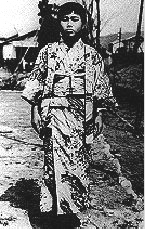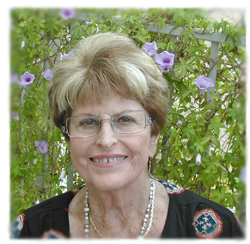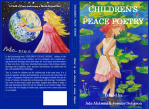Sadako and the 1000 Paper Cranes
Posted: 2015/07/22 | Author: Solveig Hansen | Filed under: Historical, Peace Stories | Leave a commentText: Solveig Hansen
2015 marks the 70th anniversary of the bombing of Hiroshima and Nagasaki.
Sadako Sasaki was only two when the atomic bomb was dropped on Hiroshima in 1945. Ten years later she was diagnosed with leukemia, the “atomic bomb desease.” She died soon after. Sadako was inspired by the Japanese saying that if you fold 1,000 paper cranes, you are granted a wish. Her wish was to get well. She only arrived at 644. Some of the cranes were given to her classmates, the rest were put in her coffin. The following year, her mother wrote this moving letter to her.
Come Back to Me Again, Sadako
A Letter from Sadako’s Mother, Fujiko Sasaki, 1956.
Fujiko Sasaki passed away in 1998, at the age of 80.
 No one is lovelier for a mother than the most miserable child. I have four children and I feel very sorry about Sadako most.
No one is lovelier for a mother than the most miserable child. I have four children and I feel very sorry about Sadako most.
Already eight months have passed since Sadako died. She was really a miserable child. When she was born during the war, there was not enough food and she weighed only 2250 grams, but she was fine except when she got pneumonia when my husband was drafted.
You may laugh at me if I praise her (translator’s note: it is not Japanese custom to praise your family in front of others), but she was so considerate and thoughtful that I relied on her. She helped me a lot in every possible way. When I can’t go to sleep, I often remember my child who got worn out and died and wish I could hug her to my heart’s content only once more. In my dream, Sadako says to me, “Leave it to me, mom” and I wake up calling, “Sadako!” Then I realize it was a dream and I wonder how she is. For a while, I’m lost in my sad thoughts and join my hands in prayer before the tablet of the deceased.
I remember January 9th last year. She showed me a lymph node behind her ear saying “Mom, I think that my lymphatic glands were swollen a little.” I thought it. But when she had a check up at ABCC (Atomic Bomb Casualty Commission) in June, 1954, she was told that she was fine, and she was really vigorous and everyone knew she loved doing exercises.
I once thought, “If she has to suffer like this, she should have died that morning on August 6th” (which was the day the bomb was dropped on Hiroshima), but I now think, “I wish she were alive and could be with me no matter how handicapped she was and how heavy her sickness was.”
I remember Sadako like I remember yesterday. What I remember most is the time when she was hospitalized. It was a rare and fine morning at the ground of Nobori-cho elementary school on February 10th, 1955. I remember vigorous children playing, jumping an elastic string. Sadako was enjoying playing it though I thought, “Sadako! You are sick with an atomic bomb disease called leukemia. Oh, no! Why you?” My husband and I took her to a hospital though she went to school happily with a bag as usual.
Sadako looked fine without knowing that her doctor said she would die in a few months. After he told us this, my husband and I cried hard near Sadako, who was sleeping peacefully. We were choked with tears and spent the night thinking, “Oh, we wish something could be done. We wish here was something to save her against this illness of atomic bomb disease.” I squeezed Sadako’s hands thinking, “If a medicine which could cure this incurable disease in the world existed in the world, then I’d like to borrow money even if it is ten million yen. Or, if possible, let me die for her…”
But we were so poor that we could barely live. I decided to do my best as a mother and love her as much as possible. But eight months after she has passed away, my heart is still choked with sorrow because I couldn’t do anything for her.
I appreciate her doctors’ efforts, caring for her day and night. When I heard that she would die soon, I bought silk fabric with a cherry blossom pattern and at night I made her a kimono. When I gave it to Sadako, she kept back her tears and said, “Mom, you did too much for me.” I asked her to put it on saying, “Sadako-chan, this is my wish, so please put this on.” She wiped her tears and wore it and looked very happy.
She knew we were poor though she didn’t say anything. She used to say, “Mom, I’m not a good daughter because you have to spend so much money for my sickness…” I’m sure sure she had many things she wanted to buy as a teenager such as new clothes, but she didn’t say anything to me and kept it to herself because she knew we were poor.
I coundn’t stop my tears when I saw Sadako wearing the kimono because she looked so nice. She watched me saying, “Why do you shed tears? You did too much for me…” We had a dream to buy kimono for her after the war because she had helped me so much. Our dream was realized finally.
One of her classmates, Miss Chizuko Hamamoto, wrote her reminiscence of Sadako as follows; Sadako looked more beautiful in her kimono because her swollen lymph nodes made her appear as if she gained weight. She wore her beautiful kimono with cherry blossom patterns today. When I said, “You look nicer with kimono than a dress, Miss Sasaki,” she said, “Is that so? Isn’t it nice?” But she looked sad. I don’t know how Sadako felt about her friend’s words, but the kimono became a keepsake.
She believed in a saying that if you fold a thousand cranes, you’d get over your sickness. She folded paper cranes carefully, one by one using a piece of paper of advertisement, medicine and wrapping. Her eyes were shining while she was folding the cranes, showing she wanted to survive by all means. When my husband and I went to see her, she said, “Dad, I’ve folded just four hundred paper cranes.” He was considerate to her, keeping back his tears.
“How hard her fate is, though she wants to live so much! How pitiful she is though she wants to live so much! Sadako, I want to do something for you by all means,” I thought, but there was nothing I could do and I thought tenderly of her.
Looking at the folded cranes which Sadako made innocently on her bed, I almost cried my heart out thinking of Sadako’s feelings. I wondered why she was born.
I gave folded cranes that she made sincerely to her classmates and put the rest of them in her coffin as well as flowers so that she could bring them to the next world.
Why didn’t you thousand cranes sing? Why didn’t they fly?
Sadako, please forgive me. How hard and uncomfortable it was every day. I wonder if you live in comfort in the heaven.
Her classmates, the members of Association of Kokeshi, come every 25th, and are kind to us. I cried reading letters of reminiscence of Sadako which will be published in a book the other day. I really respect children for their strong love and wish for peace because they made a plan to create a Statue of an Atomic Bomb Child with Sadako’s death as a start.
Sadako! The peace you wished for will be realized in the form of a statue of An Atomic Bomb Child, with the help of your classmates such as Masako and Chou as well as children from Hokkaidou in the north to Kyushu in the south. The statue of An Atomic Child will be built as the symbol of peace on the lawn near Atomic Bomb Memorial Tower in Nakajima where Sada-chan went with father!
Sadako! Listen! Can you hear your friends’ strong voices for peace? As the mother of a child who passed away when she was only twelve and a half years old, I’d like to appeal to mothers not only in Japan but all over the world that I don’t want such a horrible thing to happen again. So many children are looking for peace.
The Last Killing
Posted: 2014/10/01 | Author: Solveig Hansen | Filed under: Khalid Sohail, Peace Stories | 5 CommentsText: Solveig Hansen
This peace story by Dr. Khalid Sohail, author, humanist and psychotherapist, contemplates on our past from a hopefully not so distant future in which the people of Earth have been living in peace for ten decades. A group is gathered to celebrate the 100th anniversary of world peace. They are standing next to two statues, one of a young woman, the last victim, and the other of a young man, the last killer. She was murdered because she belonged to a different tribe, nation and religion. This killing became the turning point in history that put an end to killings and holy wars.

Dr. Khalid Sohail
The Last Killing
By Khalid Sohail, 2013
Ladies and Gentlemen,
Today is a special day, a very special day and we have all gathered here to celebrate 100th anniversary of peace on earth. For the last 99 years we have been gathering here with our children and grandchildren once a year to remember our history, remind ourselves of our dark past and wish each other a bright future.
Ladies and Gentlemen,
There was a time human beings lived in small tribes and felt very insecure. They were afraid of being attacked by other tribes. So they were always ready to fight tribal wars to defend themselves. Over the centuries there were hundreds of tribal wars and thousands of innocent men, women and children were killed. Many human beings became murderers and taught their children how to kill their enemies with their spears and arrows, knives and guns.
There was a time humans developed the concept of private property and started to buy and sell, rob and steal land.
There was a time humans developed the idea of nation states. Each tribe had their own nation and to protect their state, each nation developed an army that was ready to kill to defend their borders and people.
There was a time humans developed the concept of a God and a religion. But each nation and each tribe had their own God and their own religion. Each tribe felt their God was the only true God and all other Gods of other tribes were false Gods. Each tribe tried to convert other nations to believe in their God and if they did not convert by preaching they were forced to surrender their will. Such wars were declared holy wars.
There was a time humans learnt science and technology and developed nuclear weapons and other weapons of mass destruction and the wars between two tribes and two nations and the followers of two Gods and religions became more violent and destructive. There was a time technologically advanced nations and armies started attacking and throwing bombs on other nations to capture their lands, steal their natural resources and force them to surrender their religion and God.
There was a time humans used to fight economic, political and religious wars and declare their wars holy wars and believed that if they died during the war they will go to heaven.
There was a time humans believed in a Heavenly God who, from time to time, used to get angry and punitive and send disbelievers to hell to burn till eternity.
There was a time humans were at a cross roads. They had a choice. They could have followed the path of hate and violence and commit collective suicide by nuclear wars and civil wars and killed the whole human species or followed the path of love and peace and learn to live in harmony with other tribes and nations.
There was a time humans became wiser and enlightened individually and collectively. Their economic, religious and political leaders as well as the followers realized that the concepts of private property and nation states very destructive to humanity. They realized that all organized religions were myths. They realized that all humans share the same sun, the same moon, the same air, the same oceans and the same earth. They realized that we are all children of Mother Earth rather than Heavenly Father. They realized that our enemies are our distant cousins.
Ladies and Gentlemen,
We have all gathered here to celebrate the 100 year of love and harmony and peace on earth. It was here that the last killing had taken place and the last war was fought. This is the place where the last human being was killed. We are standing next to the statue of a young woman, the last victim, and the statue of a young man, the last murderer. She was killed because she belonged to a different tribe, a different nation and a different religion. That was the murder that became the turning point in history. That was the victim that sparked a new awareness, a new realization, a new enlightenment. That was the killing that put an end to all killings, an end to all civil wars, an end to all holy wars. That was the murder that put an end to the dark ages of human history.
Ladies and Gentlemen,
It is hard, very hard for us to imagine that our forefathers used to kill each other for the sake of private property, national border or religious conflict.
It is hard for us to imagine that our ancestors used to kill each other believing that their God was better than other Gods.
It is hard for us to believe that our elders believed in holy wars, committed violent acts and killed each other in the name of a merciful God.
Ladies and Gentlemen,
We all gather here once a year with our children and grandchildren to remind ourselves that we are all members of the same family and we are all children of Mother Earth.
Today we are very proud that we are all celebrating 100th anniversary of peace on earth. We meet every year as we need to keep on remembering our dark past to create a bright future, remind each other of our violent past to create a peaceful future. I wish you all a peaceful day, a peaceful year and a peaceful future, individually and collectively. Hope to see you all here next year.



 IFLAC Latin America
IFLAC Latin America IFLAC Hungary
IFLAC Hungary IFLAC Romania
IFLAC Romania IFLAC Spain
IFLAC Spain IFLAC in Hebrew
IFLAC in Hebrew IFLAC Japan
IFLAC Japan IFLAC Canada
IFLAC Canada IFLAC Pakistan – Yahoo group
IFLAC Pakistan – Yahoo group


